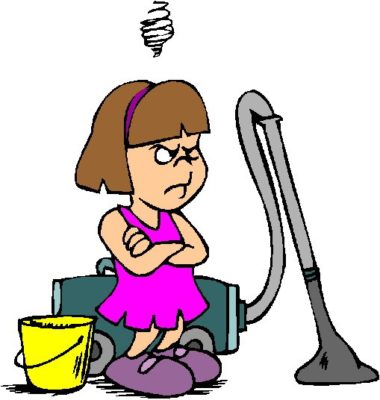Why is My Child Misbehaving?
by our partners at CSUN’s Functional Assessment and Healthy Behavior Research Lab, recent graduates Elizabeth Hernandez, M.S. and Carissa Basille, M.S., and, Dr. Tara Fahmie.
Children of all ages can sometimes misbehave. The severity of problem behavior can vary with some problem behaviors being manageable and others causing concern. Not knowing why a behavior is occurring can cause stress within the parent-child relationship. As a parent, it can be frustrating to want to help your child and not know exactly what his or her needs are. Additional stresses and concerns for the child’s safety and the safety of others is also present if the child’s behavior involves aggression. Problem behaviors, if not managed early, can interfere wit h opportunities at home, in the community, and at school. For example, if a child is consistently running away from their seat during class time, the likelihood of engaging with the learning material is low.
h opportunities at home, in the community, and at school. For example, if a child is consistently running away from their seat during class time, the likelihood of engaging with the learning material is low.
The field of applied behavior analysis has discovered three common and natural reactions to problem behavior that might increase it in the long run. Understanding these common reactions (which involve delivery of attention, escape, and preferred items) can better equip parents in finding solutions.
- Attention
Problem behaviors can occur because they have helped a child get attention from other people. Attention, like problem behavior, comes in various forms such as praise, reprimands, play time, eye-contact, etc. Remember that attention, whether “good” or “bad”, is still attention. An example of this could be when a child writes on furniture with a marker and as a result a parent begins to chase him or her around the house. Sometimes parents make the assumption that reprimands may aid in the reduction of a behavior. Unfortunately, if the behavior continues to occur consistently or even more following a reprimand, this type of attention could inadvertently be maintaining  the unwanted behavior. Another example is in the classroom setting with the interaction between the “class clown,” the teacher, and other students in the class. When the class clown acts out, they may be receiving two forms of attention: peers providing praise and laughter while the teacher provides reprimands. Although these types of attention look very different from each other, they both are factors that could be maintaining the problem behavior. Caregivers could use some of the following strategies to reduce problem behavior that is maintained by attention. The first strategy is to provide attention frequently during downtime or when the child engages in appropriate behavior. For example, if a child is playing on her own, caregivers can provide praise statements like “Good job!” or “I like how you’re playing!”. Another example of when to provide attention is if a child appropriately asks for it. The amount of attention does not have to be massive, meaning that caregivers do not have to spend hours or provide exaggerated amounts of praise. In most cases a couple of minutes of playtime or a couple of praise statements are effective.
the unwanted behavior. Another example is in the classroom setting with the interaction between the “class clown,” the teacher, and other students in the class. When the class clown acts out, they may be receiving two forms of attention: peers providing praise and laughter while the teacher provides reprimands. Although these types of attention look very different from each other, they both are factors that could be maintaining the problem behavior. Caregivers could use some of the following strategies to reduce problem behavior that is maintained by attention. The first strategy is to provide attention frequently during downtime or when the child engages in appropriate behavior. For example, if a child is playing on her own, caregivers can provide praise statements like “Good job!” or “I like how you’re playing!”. Another example of when to provide attention is if a child appropriately asks for it. The amount of attention does not have to be massive, meaning that caregivers do not have to spend hours or provide exaggerated amounts of praise. In most cases a couple of minutes of playtime or a couple of praise statements are effective.
- Escape or Avoidance
Problem behaviors can also occur because they have helped a child to escape or avoid non-preferred items or activities. For example, a child might engage in problem behavior to escape or avoid chores, homework, or bedtime. The problem behavior could also occur to avoid a specific object. An example of this is a child engaging in screaming and crying to avoid a dog or avoid the presentation of vegetables during dinner time. Activities or items that are being  avoided are not necessarily bad for the child. For example, let’s say a child begins to whine and complain when she’s told that it is time to complete chores around the house. If this results in the parent doing the chores for the child, the child has avoided having to do chores. The problem behavior may be escape maintained if whining and complaining consistently gets a child out of chores. Similarly, if a parent provides a time out following whining and complaining about chores, they may be making the whining and complaining more likely in the future by allowing escape. To reduce the likelihood of escape-maintained problem behaviors occurring, a parent can provide small frequent breaks from an activity prior to the occurrence of the problem behavior. Parents can also make an activity more fun or break it down into easier steps for the child.
avoided are not necessarily bad for the child. For example, let’s say a child begins to whine and complain when she’s told that it is time to complete chores around the house. If this results in the parent doing the chores for the child, the child has avoided having to do chores. The problem behavior may be escape maintained if whining and complaining consistently gets a child out of chores. Similarly, if a parent provides a time out following whining and complaining about chores, they may be making the whining and complaining more likely in the future by allowing escape. To reduce the likelihood of escape-maintained problem behaviors occurring, a parent can provide small frequent breaks from an activity prior to the occurrence of the problem behavior. Parents can also make an activity more fun or break it down into easier steps for the child.
- Access to Preferred Items / Activities
A third possible reason problem behavior may continue to occur is because it has helped a child get preferred items or activities. For example, a child scream or cry when his parent tells him he can’t have a snack before dinner. If this immediately results in the parent allowing the child to have the snack, crying and screaming have helped the child gain access to something preferred. The child is also more likely to cry and scream in similar situations in the future. One strategy that a caregiver can use to decrease the likelihood of the problem behavior helping a child get preferred items is to offer a preferred alternative when having to say, “no.” For example, if a child asks for a snack right before dinner, the parent could say, “We can’t have a snack, but we can have dinner right now.”
If a parent is not seeing a decrease in their child’s problem behavior or is seeing an increase, the best next step would be to bring their concerns to their supervisor. Addressing a problem behavior sooner rather than later can help reduce the likelihood of it getting worse. Parents shouldn’t be afraid to take it a step further and take some brief data at home. Recording information such as time of the behavior, what occurs prior to the behavior, the exact behavior occurring, and what occurs in immediately after is information that can help the supervisor develop solutions. Remember that as Board-Certified Behavior Analysts (BCBAs), our supervisors are here to help address parent concerns. Providing them with an idea as to why the behavior could be occurring is a great way to be involved in finding solutions.


